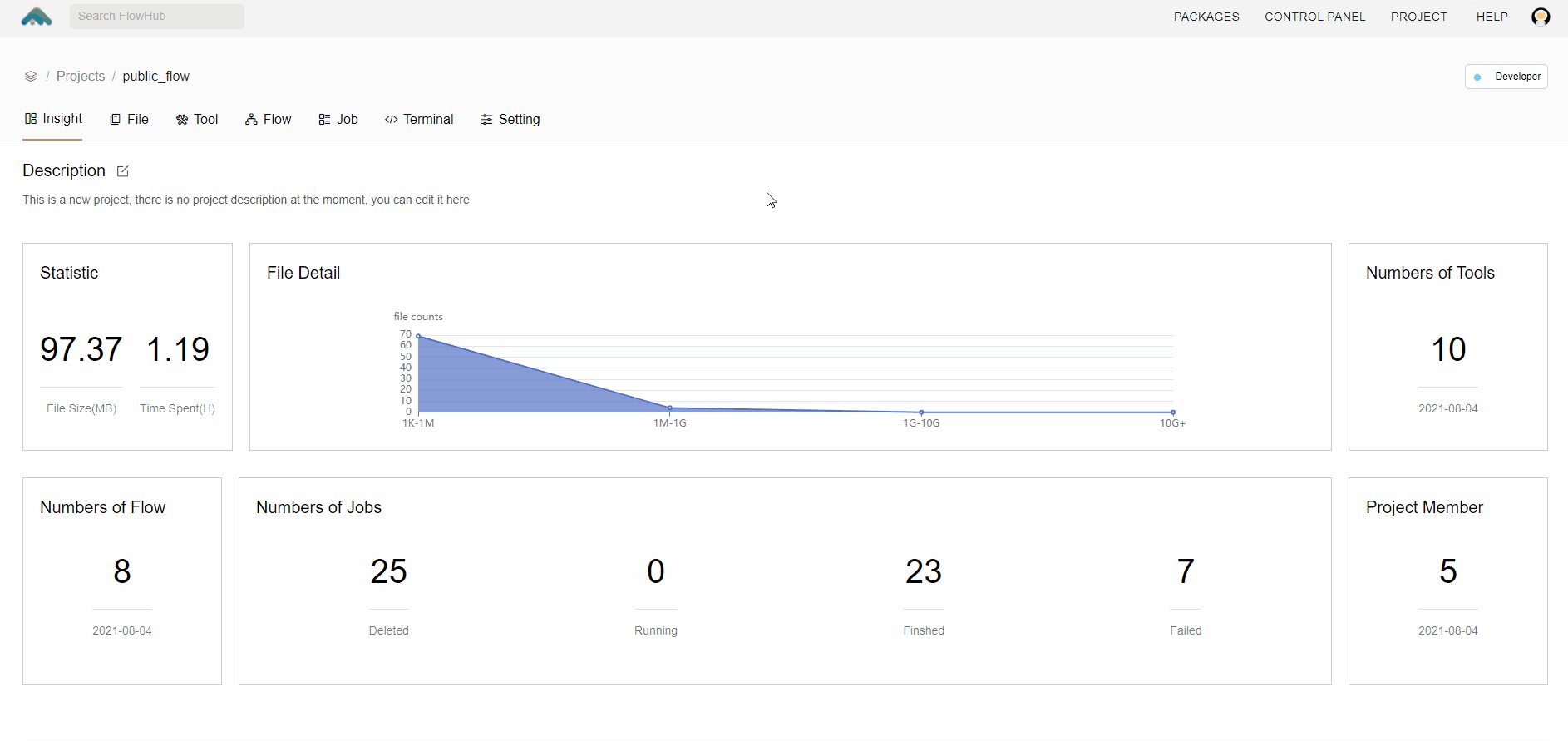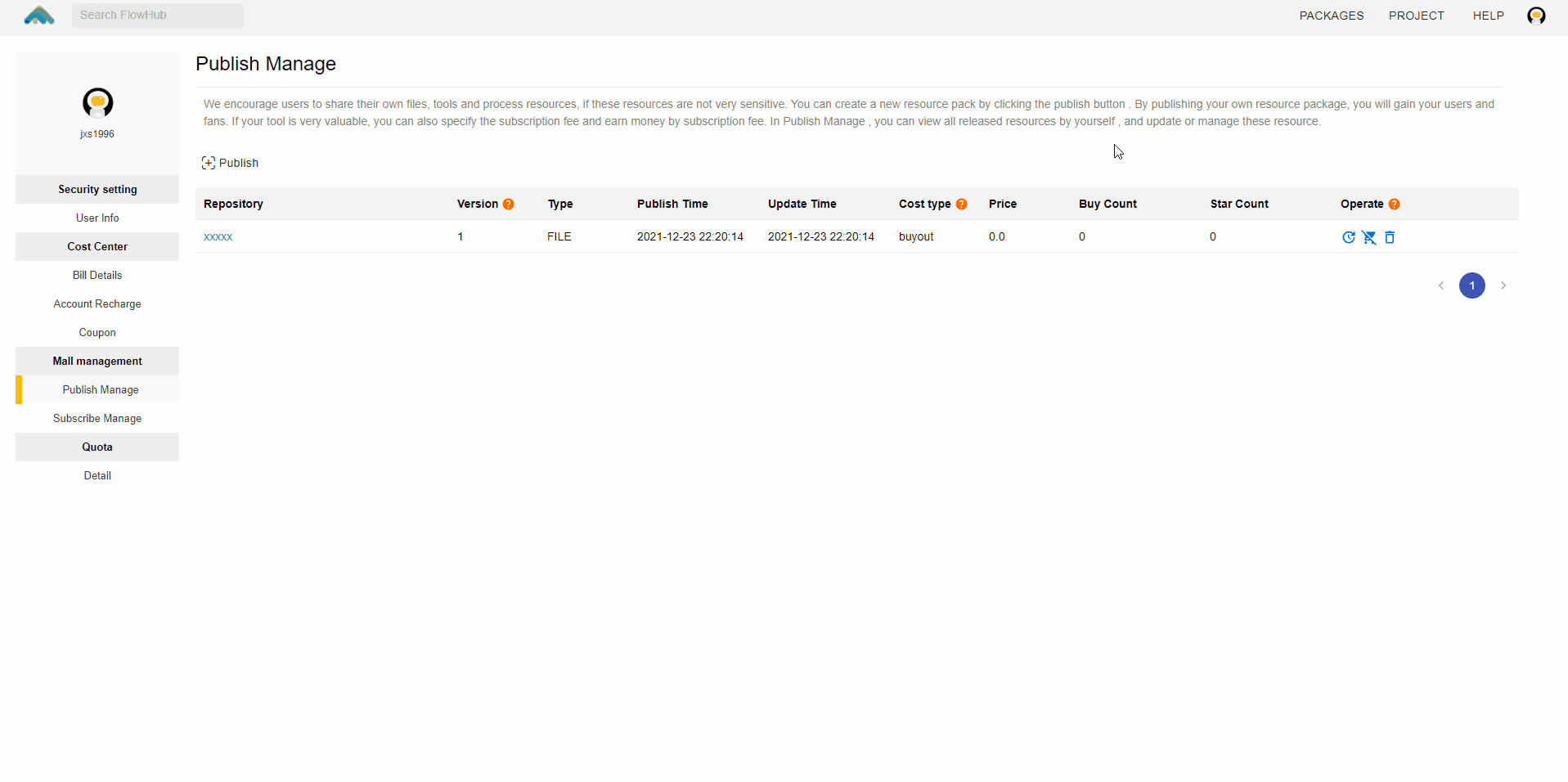Tool release and management
When we have finished making the tool, you can do the following: 1) Use the fkit tool to run the tool in the local environment to complete the tool test. For details, refer to the ‘local operation and test of the tool’; 2) Use single or multiple tools to complete process construction and deliver tasks to complete project analysis; 3) Publish the tools and flow that have been made, publish some documents that have been relied upon, set the charging mode of the tools, and supplement relevant instructions, so that other users can better use the resources.
Here we introduce how to publish and manage your own resources. In the upper navigation bar, find the PACKAGES button, click to enter, the default is to enter the Publish Manage release management page, you can click Publish to create a new release. You need to set the name of the resource package on the new page, and add the files, tools, and processes under your specified project.You can set the price, fill in the instructions for use, and make the instructions as detailed as possible to ensure others can understanding and use. After publishing, you can find the resource package you published in the community.

Developers can find the tools they publish on their Publish Manage page and enter the setting page of the tool. When you have completed the tool update or have new resources that need to be added to the resource package, you can click UPDATE to add, delete, or replace the original Some resources.

If you find some problems with the resource pack and want to stop publishing, you can click the UNPUBLISH button to suspend publishing. If you want to stop publishing the tool permanently, you can click DELETE, and it will be deleted from your publishing management and will not be retained. Note that users who subscribed to the tool before stopping publishing or deleting it will still be able to run the tool. If the resource is updated, we will remind the user whether to update, and the user can choose not to update.

In the latest version, in order to avoid going deep into the multi-level management of resource packs, some shortcut operations are also added, as shown in the figure below, and the function description prompt is also added to the column in the figure (move to the question mark, you can display the function description of the column ).
